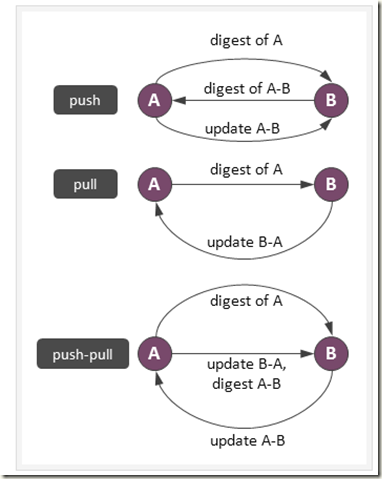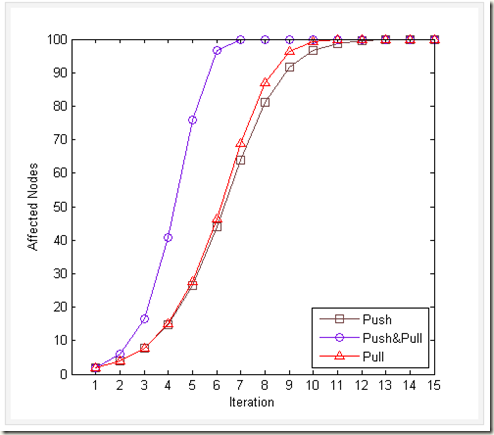bc https://en.wikipedia.org/wiki/Gossip_protocol
- 分布式容错性:分布式网络极其鲁棒,能够容忍部分节点的异常状态;
- 不可篡改性:一致提交后的数据会一直存在,不可被销毁或修改;
- 隐私保护性:密码学保证了数据隐私,即便数据泄露,也无法解析。
随之带来的业务特性将可能包括:
- 可信任性:区块链技术可以提供天然可信的分布式账本平台,不需要额外第三方中介机构参与;
- 降低成本:跟传统技术相比,区块链技术可能带来更短的时间、更少的人力,降低维护成本;
- 增强安全:区块链技术将有利于安全、可靠的审计管理和账目清算,减少犯罪风险。
比特币区块链已经支持了简单的脚本计算,但仅限于数字货币相关的处理。除了支持数字货币外,还可以将区块链上执行的处理过程进一步泛化,即提供智能合约(Smart Contract)。智能合约可以提供除了货币交易功能外更灵活的合约功能,执行更为复杂的操作。
这样扩展之后的区块链,已经超越了单纯数据记录的功能了,实际上带有点“智能计算”的意味了;更进一步地,还可以为区块链加入权限管理,高级编程语言支持等,实现更强大的、支持更多商用场景的分布式账本。
据参与者的不同,可以分为公有(Public)链、联盟(Consortium)链和私有(Private)链。
公有链,顾名思义,任何人都可以参与使用和维护,典型的如比特币区块链,信息是完全公开的。
如果进一步引入许可机制,可以实现私有链和联盟链两种类型。
私有链,由集中管理者进行管理限制,只有内部少数人可以使用,信息不公开。
联盟链则介于两者之间,由若干组织一起合作维护一条区块链,该区块链的使用必须是带有权限的限制访问,相关信息会得到保护,典型如供应链机构或银行联盟。
目前来看,公有链更容易吸引市场和媒体的眼球,但更多的商业价值会在联盟链和私有链上落地。
根据使用目的和场景的不同,又可以分为以数字货币为目的的货币链,以记录产权为目的的产权链,以众筹为目的的众筹链等……,也有不局限特定应用场景的通用链。
现有大部分区块链实现都至少包括了网络层、共识层、智能合约和应用层等结构,联盟链实现往往还会引入一定的权限管理机制。
问题是什么?
This problem appears both in data consistency maintenance and in synchronization of a cluster state (propagation of the cluster membership information and so on). Although the problem above can be solved by means of a global coordinator that monitors a database and builds a global synchronization plan or schedule, decentralized databases take advantage of more fault-tolerant approach. The main idea is to use well-studied epidemic protocols [7] that are relatively simple, provide a pretty good convergence time, and can tolerate almost any failures or network partitions. Although there are different classes of epidemic algorithms, we focus on anti-entropy protocols because of their intensive usage in NoSQL databases.
Anti-entropy protocols assume that synchronization is performed by a fixed schedule – every node regularly chooses another node at random or by some rule and exchanges database contents, resolving differences. There are three flavors of anti-entropy protocols: push, pull, and push-pull. The idea of the push protocol is to simply select a random peer and push a current state of data to it. In practice, it is quite silly to push the entire database, so nodes typically work in accordance with the protocol which is depicted in the figure below.
这个问题当然可以通过global coordinator来解决, 但是decentralized设计可以提供more fault-tolerant approach的设计.
其实算法很简单, 就是epidemic protocols, 这儿选了在Nosql中广泛应用的anti-entropy protocols.
Push, 问B你有什么和我不同, B告诉我, 我把不同部分push给B
Pull, 告诉B我有什么, B把我没有的发给我
Push-pull, 把上面两个同时结合做了, 图的下面两条线箭头画反了
Anti-entropy protocols provide reasonable good convergence time and scalability. The following figure shows simulation results for propagation of an update in the cluster of 100 nodes. On each iteration, each node contacts one randomly selected peer.
One can see that the pull style provides better convergence than the push, and this can be proven theoretically [7]. Also, push has a problem with a “convergence tail” when a small percent of nodes remains unaffected during many iterations, although almost all nodes are already touched. The Push-Pull approach greatly improves efficiency in comparison with the original push or pulls techniques, so it is typically used in practice. Anti-entropy is scalable because the average conversion time grows as a logarithmic function of the cluster size.
Although these techniques look pretty simple, there are many studies [5] regarding performance of anti-entropy protocols under different constraints. One can leverage knowledge of the network topology to replace a random peer selection by a more efficient schema [10]; adjust transmit rates or use advanced rules to select data to be synchronized if the network bandwidth is limited [9]. Computation of digest can also be challenging, so a database can maintain a journal of the recent updates to facilitate digests computing.
怎么衡量Anti-entropy protocols, 当然是通过convergence time, 肯定是Push-pull效率最高
posted on 2018-06-23 11:35 szllq2000 阅读(2431) 评论(0) 编辑 收藏 举报




